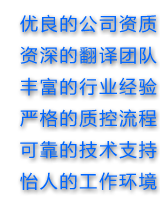Christmas turkey will be grown in a lab by 2030, say scientists
科学家预测,2030年端上圣诞餐桌的火鸡将可能是实验室的培养肉,这种培养火鸡肉不用杀生又环保,而且这样一来很多素食主义者也可以品尝到火鸡肉的美味了。

In 1931, Winston Churchill predicted that within 50 years the world would "escape the absurdity" of raising a whole chicken on farm and instead grow parts in lab.
1931年,英国首相温斯顿•丘吉尔曾预言,50年内,人类将不需在农场里“荒谬”地养殖整鸡,而是在实验室里养殖出鸡的各个部位。
Now scientists are predicting that his vision will come to pass within the next 15 years, with the first lab-grown turkey gracing Christmas tables by 2030.
而今科学家预测,丘吉尔的设想将在15年内成真——到2030年底前,实验室里养的火鸡肉将首次出现在圣诞餐桌上。
Paul Mozdziak, professor of poultry science at North Carolina State University, is confident that in the future meat will be grown in 5,000 gallon drums and factory farming will be replaced by large scale "cellular agriculture".
北卡罗来纳州立大学家禽学教授保罗•莫兹达爱克信心满满地认为,动物肉将可在5000加仑大的圆桶内养殖,工厂化养殖也将为大规模的“细胞农业”所取代。
“Years from now, when people are in the grocery story trying to decide if they want to buy traditional versus cultivated meat, I am 100 percent sure that culture meat is going to be just as cheap, if not cheaper,” Prof Mozdziak told MIT Technology Review.
莫兹达爱克教授告诉《麻省理工大学科技评论》:“我百分之百确定,多年以后,人们在杂货店里犹豫要买传统肉还是培养肉时,就算培养肉没比传统肉便宜,二者价格也至少会持平。”
Although the idea of biotech companies growing meat in a lab might seem ethically dubious, it has won the backing of environmentalists and animal rights campaigners who say it would reduce the reliance on battery animals and save resources.
尽管生物科技公司在实验室培养肉类似乎存在伦理争议,但却得到了环保主义者和动物权益倡导者的支持,他们认为,培养肉类既能减轻人类对机械化饲养动物的依赖,又能节约能源。
Livestock farming has the biggest carbon footprint of any food and producing beef in vitro could cut greenhouse gas emissions by 90 percent.
畜牧业是所有食物产业中碳足迹最大的,通过体外培养的方式生产牛肉能减少90%的温室气体排放。
Surveys have also shown that vegetarians would eat meat if it were grown in a lab, so it could open a lucrative new market for investors.
此外,调查显示,素食者愿意食用实验室里培养出来的肉,这可能会为投资者打开一个利润丰厚的新市场。
The process works by taking a small piece of turkey breast and isolating special stem cells which form muscle fibre. Those cells are then placed in a soup of sugar and amino acids which tricks them into thinking they are still inside the turkey and need to continue dividing.
培养火鸡肉的过程如下:取一小块火鸡胸肉,从中分离出能形成肌肉纤维的特殊干细胞,将其置于含糖和氨基酸的液体中,这些干细胞就会以为自己还在火鸡体内,然后继续分裂出更多细胞。
A single satellite cell can undergo 75 generations of division during three months, which in theory could produce enough muscle to make 20 trillion turkey nuggets.
三个月内,一个卫星细胞能分裂高达75次。理论上,该细胞培养出的肉能做出20万亿块火鸡鸡块。
At present, culture meat is not economically viable. When the first hamburger was created in 2013, it took three months to grow at a cost of £220,000.
由于经济原因,培养肉类目前尚不可行。2013年,第一个合成肉汉堡诞生,培养这块肉耗时三个月,耗资22万英镑。
And creating a turkey-size amount of meat in Professor Mozdziak's lab would currently take more than £20,000 worth of growth serum.
目前,在莫兹达爱克教授的实验室里,想要培养出火鸡那么大的一块肉需要价值2万多英镑的生长血清。
However, the team is now working alongside biomedical engineer David Kaplan at Tufts University, Massachusetts, who is looking for a way to grow cells in 3D, not just flat sheets, which would radically speed up the process and lower the cost.
然而,莫兹达爱克教授的团队正与马萨诸塞州塔夫茨大学的生物医学工程师大卫•卡普兰合作,后者正在寻找培养三维细胞的方法,而不只是平面二维细胞。一旦成功,这项技术将极大提升培养肉类的速度,并大幅降低其成本。
The team predicts that the first meat could be available on shelves by 2030.
该团队预测第一批培养肉将于2030年底前上市。













